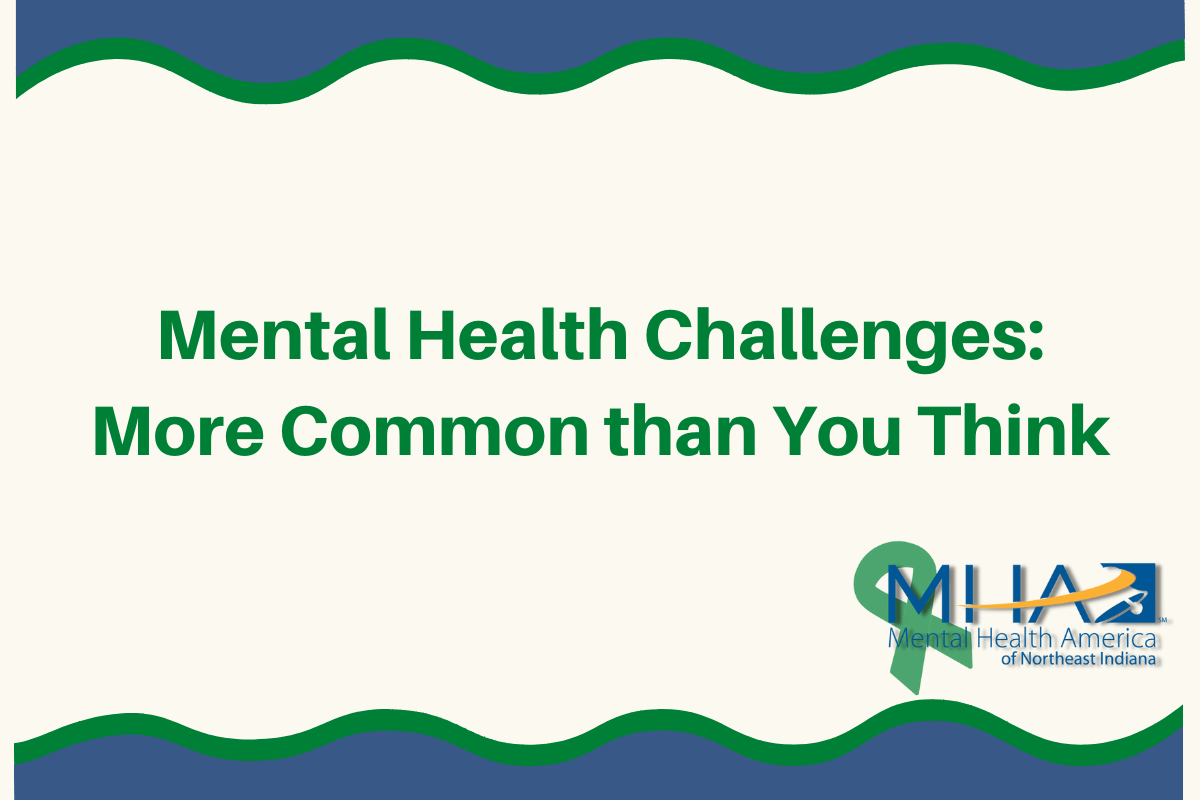This essay is part of a series during Mental Health Awareness Month. You can learn more about Mental Health Awareness Month, including helpful resources, here.
Key Takeaways:
- Mental health conditions are exceedingly common, impacting three times more Americans each year than heart disease.
- These conditions cause uncontrollable changes in how people think, act, and feel. Anxiety and depression are the most common.
- Free and anonymous online mental health screenings for a variety of conditions are available any time at https://screening.mhanational.org/screening-tools/
Pop quiz! What’s more common than coronary heart disease, the leading cause of death in America?
The answer? Mental health conditions, which impact an estimated 53 million adults in America (National Institute on Mental Health, Mental Illness), compared to the 18 million adults living with heart disease (Center for Disease Control and Prevention, Heart Disease Facts).
In fact, 50% of Americans will be diagnosed with a mental health condition at some point in their lifetime (Centers for Disease Control and Prevention, About Mental Health). Mental health conditions are simply more common than the average person realizes.
Mental health conditions impact around 53 million adults in America every year (around three times as many as heart disease).
What, exactly, is a mental health condition? According to the American Psychiatric Association, mental health conditions “involve changes in emotion, thinking or behavior (or a combination of these)…[They are] associated with distress and/or problems functioning in social, work or family activities.”
In terms easier to understand, mental health conditions cause changes in how people feel, think, and act. Even mild conditions can change how a person interacts with their friends, family, and work. Without treatment, these changes can’t be controlled by the person who has a mental health condition. They can’t just stop themselves from being anxious or depressed without some help.
People don’t develop mental health conditions because of just one thing – often, a variety of factors play a part, including genetics, environment, brain structure, and stressful jobs or home lives. That being said, mental health conditions aren’t anyone’s fault and doesn’t mean that the person or their family did something wrong. (Adapted from National Alliance on Mental Illness, Mental Health Conditions)
The most common mental health conditions are anxiety and depression. While everyone can feel anxious and extremely sad from time to time, anxiety and depression are more than just emotions; they can severely change someone’s life. You can read more about anxiety disorders here and depression here.
The most common mental health conditions are anxiety and depression.
How do you know if you might have a mental health condition? If you feel like you might need help but you’re not sure, National Mental Health America offers free online screenings. These screenings are free, anonymous, and provide instant results. You can then take those results to your doctor to see what can help you. Be sure to avoid self-diagnosis – while the Internet makes information about conditions available to us all, it’s best to discuss your symptoms with a doctor.
Seeking help can be scary. So can being diagnosed with a condition. It can make you feel “other” and like you’re not normal. On the other hand, a diagnosis can help you move forward. You can start getting treatment, and even just knowing what’s wrong can be comforting.
Mental health challenges are common. Seeking help can be scary, and you aren’t alone if you feel like you are struggling with your mental health. Resources are available, so that you can seek help, get well, and enjoy life with a mental health condition.
Resources:
- Free, anonymous mental health screenings: https://screening.mhanational.org/screening-tools/
- Be Well Indiana, where you can talk to a counselor 24/7: https://bewellindiana.com/

